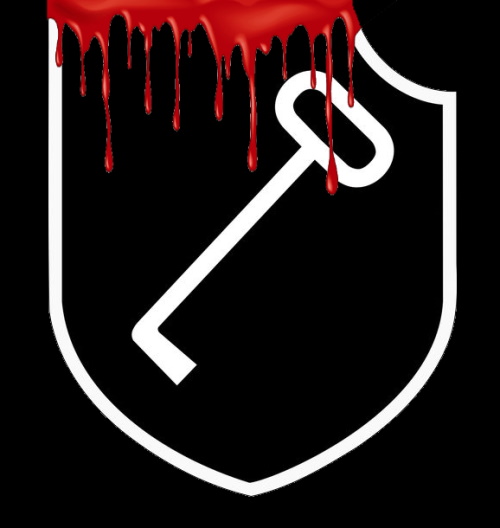(December 16) The march began about 0600 in the morning to 1200 noon. I fell out with my  group at about 1600. But the bad road conditions and the immense number of vehicles that were compressed in that area, together with the group of Skorzeny, which apparently had not had very much training, the traffic on the road proved to be of the chaotic extent with the entire 1.SS-Panzer-Division, the 12.Volksgernadier-Division, the 3.Fallschirmjäerger-Division. The movement was entirely stopped at Scheidt and road jams prevented the engineers from getting through to repair a blown-up bridge. Entire Artillery of the 12.Volksgrenadier-Division had to change positions to the front, and being horse-drawn, there was a terrible heap of Tiger tanks on the road and four-legged mules. Peiper and his commanders personally directed traffic, and since the bridge was not completed on time, we had to have a detour built, by reason of which I could only start off with being twelve hours late.
group at about 1600. But the bad road conditions and the immense number of vehicles that were compressed in that area, together with the group of Skorzeny, which apparently had not had very much training, the traffic on the road proved to be of the chaotic extent with the entire 1.SS-Panzer-Division, the 12.Volksgernadier-Division, the 3.Fallschirmjäerger-Division. The movement was entirely stopped at Scheidt and road jams prevented the engineers from getting through to repair a blown-up bridge. Entire Artillery of the 12.Volksgrenadier-Division had to change positions to the front, and being horse-drawn, there was a terrible heap of Tiger tanks on the road and four-legged mules. Peiper and his commanders personally directed traffic, and since the bridge was not completed on time, we had to have a detour built, by reason of which I could only start off with being twelve hours late.
First, we reached the town of Losheim (Germany) in the darkness at about 1700. Losheim had been taken by the 12.Volksgrenadier-Division. Traffic jam; exceptionally dark night and the town was under American Artillery fire.
Next town: contrary to my original orders according to which I was supposed to proceed along the main highway, I received a radio order to take the route by way of Hüllscheid, Merlcheid, Hasenvenn, and Lanzerath (Belgium). Minefields impeded. To the best of my recollection, I, therefore, lost three tanks and five half-tracks on the way from Losheim to Lanzerath. We arrived in Lanzerath at about midnight, I had a meeting with Oberst von Hoffmann at the Café in Lanzerath, and I received a radio order to embark elements of the 3.Fallschimjäger-Division on our tanks. I ordered von Hoffmann to prepare a battalion for an attack along the Lanzerath – Honsfeld road, acting as his flank defense.
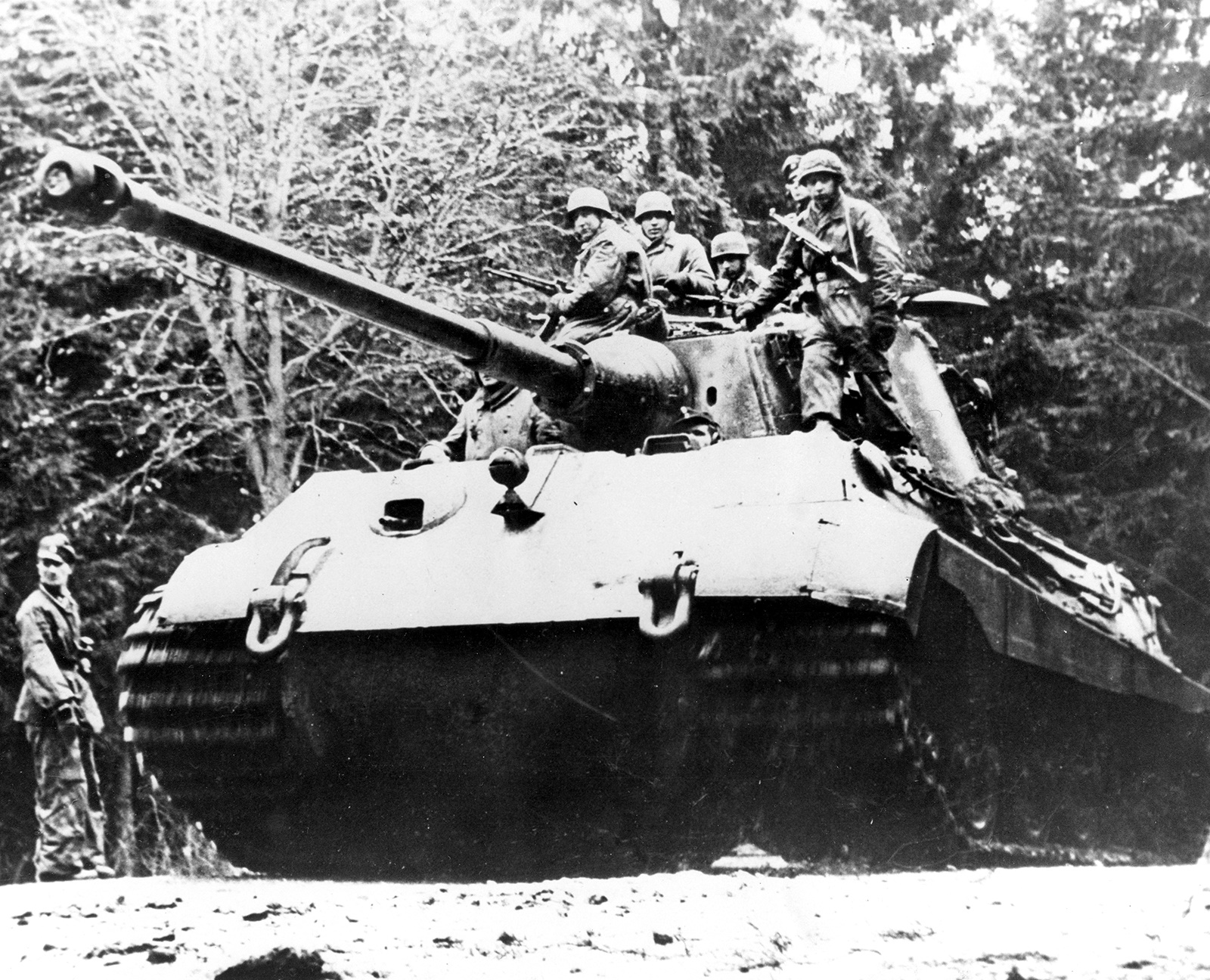 (December 17) At about 0400, we attacked with tanks, motorized infantry, and foot infantry towards the forest. Contrary to the reports received from the Paratroopers, the forest was freed of enemy troops. It was under a severe artillery barrage. At Dawn, we surprisingly entered Honsfeld. (Questioned about combat conditions there, an American Recon unit was stationed in the town.) The vehicles were standing in the front of all the doors of all the houses in town and there were plenty of weapons around, particularly, Armored Cars, Tanks, Tanks Destroyers, and AT guns, but the troops were not at their weapons or in their vehicles. All the troops were inside and asleep. Hardly any fighting. First moving spearheads led by Preuss merely shot at some houses and the town was passed without any serious resistance. Peiper was with the spearhead. His own command group which was to march behind Poetschke’s Group remained way behind and he stayed with the spearhead to take action more rapidly, to encourage troops, and to evaluate the results of the reconnaissance performed by the unit Knittel and the unit under Hardieck, both of which were supposed to pass by me. The Fallschirmjäger Battalion, under SS-Obersturmbannführer Paul Tauber, was left behind in Honsfeld, due to orders misunderstanding.
(December 17) At about 0400, we attacked with tanks, motorized infantry, and foot infantry towards the forest. Contrary to the reports received from the Paratroopers, the forest was freed of enemy troops. It was under a severe artillery barrage. At Dawn, we surprisingly entered Honsfeld. (Questioned about combat conditions there, an American Recon unit was stationed in the town.) The vehicles were standing in the front of all the doors of all the houses in town and there were plenty of weapons around, particularly, Armored Cars, Tanks, Tanks Destroyers, and AT guns, but the troops were not at their weapons or in their vehicles. All the troops were inside and asleep. Hardly any fighting. First moving spearheads led by Preuss merely shot at some houses and the town was passed without any serious resistance. Peiper was with the spearhead. His own command group which was to march behind Poetschke’s Group remained way behind and he stayed with the spearhead to take action more rapidly, to encourage troops, and to evaluate the results of the reconnaissance performed by the unit Knittel and the unit under Hardieck, both of which were supposed to pass by me. The Fallschirmjäger Battalion, under SS-Obersturmbannführer Paul Tauber, was left behind in Honsfeld, due to orders misunderstanding.
Beyond Honsfeld: the spearhead filled in approximately one kilometer west of Honsfeld. Peiper stopped; he was in Poetschke’s tank and/or in Diefenthal’s vehicle, and in the lead. Continued on the road he had originally planned but testimony explained: I first had had orders to march to Heppenbach from Honsfeld; on account of the obviously poor road conditions I decided to go by way of Bullingen. Bullingen itself was assigned to the 12.SS-Panzer-Division by the operational order. Since I heard the noise of combat which was due to the 12.SS-Panzer-Division comparatively far to the rear and up northeast, I 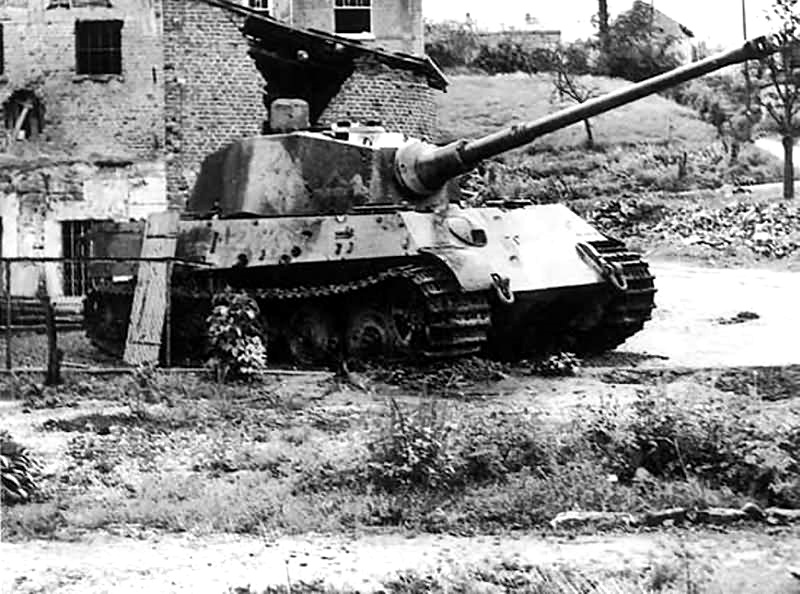 thought it might be possible to pass through the town of Bullingen without causing a traffic jam together with the 12.Panzer. We continued along the main road to Bullingen. Small Airdrome on the left, just outside Bullingen, at which were 12 or 13 American liaison planes, propellers moving, ready to take-off. Crews, surprised, hid in hedgerows, fired upon Peiper’s force. Fire from the town also.
thought it might be possible to pass through the town of Bullingen without causing a traffic jam together with the 12.Panzer. We continued along the main road to Bullingen. Small Airdrome on the left, just outside Bullingen, at which were 12 or 13 American liaison planes, propellers moving, ready to take-off. Crews, surprised, hid in hedgerows, fired upon Peiper’s force. Fire from the town also.
Our leading vehicle strafed with Machine Gun and Artillery destroying planes. Time from 0900 to 0930. Peiper went into Bullingen about 0930. Captured fuel dump, vehicles left Bullingen at full speed in order of refueling, along a road to the southwest. American Artillery helped to accelerate the departure movements.
About 3 kilometers from Bullingen (Morscheck), at a fork, Peiper ordered a short break to allow the entire Kampfgruppe to regroup. The leading vehicle, Preuss, lost contact with the rear of the column because he continued along the road Peiper originally ordered him on, namely southwest. But since down there in the next town, there was one bridge and those were particular – points of particular danger for us. I decided at this road fork to choose the road into Moderscheid by way of the forest, instead, particularly, since this resulted in time-saving and was a short cut and also take us away from an unexpected direction.
We moved from Möderscheid to Schoppen, then Odenval toward Thirimont, about noon on Dec 17. Peiper indicated that his whole Kampfgruppe was not with him, and the identity of the force was not clear from the testimony, but he rode Diefenthal’s vehicle at  least some between Odenval and Thirimont. Stopped Jeep driver who was to repair a telephone line and learned that the American troops had given up Malmédy and were retreating in a westerly and southwesterly direction. No combat at this location. But at about that time I suddenly heard my cannons and machines guns open fire. I therefore realized that the leading vehicles of the group had hit the main road from Malmédy to St Vith and since at the moment I was completely alone with the jeep driver, we drove off to the spearhead. The column behind me was detached since the pieces of road between this road fork and Möderscheid was exceptionally difficult. About here, a road a kilometer east of Baugnez (Bagatelle), Peiper met his armored spearhead.
least some between Odenval and Thirimont. Stopped Jeep driver who was to repair a telephone line and learned that the American troops had given up Malmédy and were retreating in a westerly and southwesterly direction. No combat at this location. But at about that time I suddenly heard my cannons and machines guns open fire. I therefore realized that the leading vehicles of the group had hit the main road from Malmédy to St Vith and since at the moment I was completely alone with the jeep driver, we drove off to the spearhead. The column behind me was detached since the pieces of road between this road fork and Möderscheid was exceptionally difficult. About here, a road a kilometer east of Baugnez (Bagatelle), Peiper met his armored spearhead.
At the east end of Malmédy on the highway N-23 (today N-62) leading to St Vith (Roadblock Avenue Monbijou – 291-ECB a 99-IBS) one American convoy leaving the area and heading to St Vith (B Battery 285-FAOB) was stopped by Lt Col David Pergrin, CO of the 291-ECB. Pergrin had one company of engineers available to him. He had no idea of the extent of the enemy’s strength, but one of his own jeep patrols had warned him that a German armored column was approaching the area to the southeast of Malmédy (Bagatelle – Baugnez). He therefore warned the jeep’s passengers, Capt Roger L. Mills (Hqs Bat. 285-FAOB) and Lt Virgil Lary, not to proceed in that direction, and advised them to turn around and go to St Vith using another way. The artillery officers did not listen. Ignoring Pergrin’s warning, the battery proceeded on its way. At about 1300, Mills and Lary’s column approached the crossroads at Baugnez.
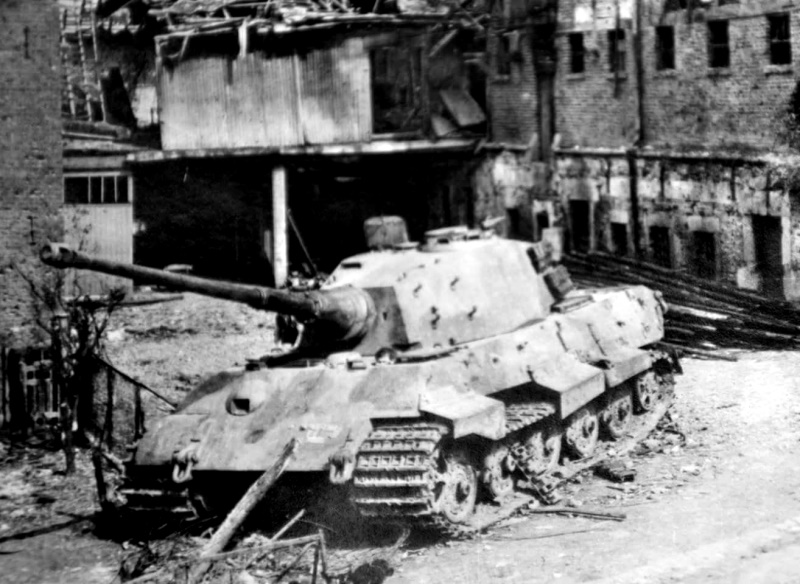 There they met a US MP, Pvt Homer Ford whose mission was to ensure military traffic made the correct turn at the crossroads. A few minutes earlier he had directed elements of the US 7-AD towards St Vith, and he now directed the leading vehicle of the 285-FAOB column to turn towards Ligneuville. As the 10th vehicle passed the crossroads, firing was heard on the rear. On Jan 13, US troops found 66 members of B Bat. 285-FAOB; 3 from Hqs Co 285-FAOB; 4 from the 32-AIB; 2 from the 200-FAB; 2 from the 546-Ambulance Bn; 4 from the 575-Ambulance Co; 1 from the 86-ECB.
There they met a US MP, Pvt Homer Ford whose mission was to ensure military traffic made the correct turn at the crossroads. A few minutes earlier he had directed elements of the US 7-AD towards St Vith, and he now directed the leading vehicle of the 285-FAOB column to turn towards Ligneuville. As the 10th vehicle passed the crossroads, firing was heard on the rear. On Jan 13, US troops found 66 members of B Bat. 285-FAOB; 3 from Hqs Co 285-FAOB; 4 from the 32-AIB; 2 from the 200-FAB; 2 from the 546-Ambulance Bn; 4 from the 575-Ambulance Co; 1 from the 86-ECB.
About five tanks and about the same number of half-tracks were standing in front of me and were shooting with all weapons at their disposal in a southwesterly direction at a range of about 500 meters. This was the road leading south from the Malmédy crossroads. This was about 1300 to 1330, Dec 17. Peiper saw personally an American truck convoy (285-FAOB) and ordered a cease fire several times which finally ended about 2 minutes later. Annoyed at having his armored spearhead held up, so much time already being lost. Also, Peiper was annoyed at having these beautiful trucks which were needed so badly all shot up. Peiper ordered the column to drive on at a great speed. He had Poetschke radioing to division that enemy was leaving Malmédy, retreating toward south and southwest, and that we had reached the main road south of Malmédy. Peiper mounted Diefenthal’s vehicle and followed the others already moving towards the cross roads. The road leading south from the Malmédy crossroads, from beginning of the forest was pretty well blocked by the American destroyed vehicles. One Panther pushed them off the road. Peiper and Diefenthal reached the Crossroads at Baugnez at about 1330.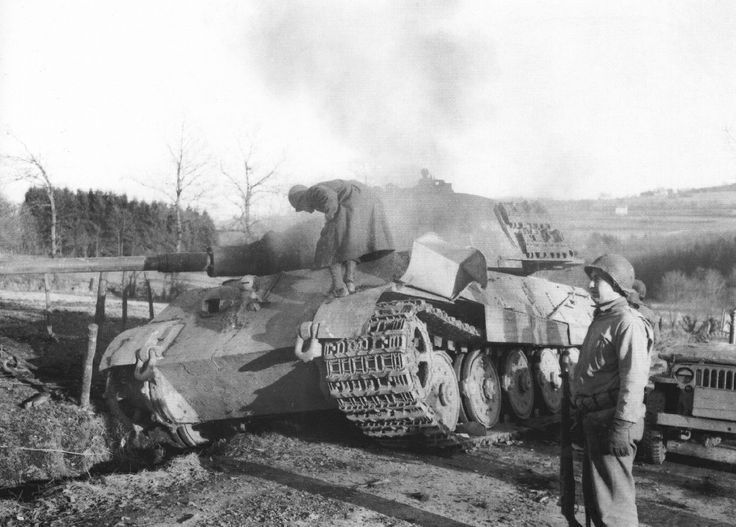
Peiper continued his road and drove into Ligneuville, arriving shortly after 1400. He ordered Diefenthal to clean out the town with his grenadier troops. A Sherman knocked out the leading tank in the column (Mark V Panther SS-Untersturmführer Arndt Fischer) and the following Panther knocked out the Sherman. Peiper remained in Ligneuville for about 45 minutes. Burning ammo was exploding everywhere. He bandaged Arndt Fisher, the adjutant of the 1.Battalion. Poetscke arrived on foot. Peiper was informed that a high echelon American Command Post had been located in the Hotel (Hotel du Moulin) here which according to the testimony of the innkeeper of the restaurant already had been disturbed at their dinner. A strong tank column was also supposed to be immediately toward our front. Peiper changed the march order of the spearhead, bringing 1.Panzer-Company from the rear to take over the lead. The Group continued then to Stavelot. The estimated time of the arrival of the Kampfgruppe in the outskirt of Stavelot (La Vaulx Richard) was between 2000 and 2100, Dec 17. The Group had at once attempted to take the town in one rapid attack. That, however, proved impossible because of infantry troops that were available were not strong enough and because the tanks had no chance to come into action along the street. The terrain was extraordinarily unfavorable, slopped down very much toward the left and a hairpin curve was right outside the town so that everybody passing by this curve was knocked by several American Tanks and Tank Destroyers (526-AIR & 825-TDB) as well as infantrymen (99-IBS) maning AT gun which were located behind a roadblock at the edge of the town.
 The first tank to give it a try was SS-Hauptsturmführer Karl Kremser’s Panther. The Mark V was knocked out and Kremser, CO of the 1.Company, seriously wounded, had to be replaced by SS-Obersturmführer Hans Hennecke. The second to try the American defenses was the Mark VI-2 Tiger (#222) from SS-Oberscharführer Kurt Sowa. The 222 got also knocked out and had to be abandoned at the bottom of the road leading to the Amblève bridge. My own attacking infantry remained at the edge of the town and suffered severe casualties and had to dig in. Officers with me were Poetschke, Diefenthal, Nueske, Gruhle, and one officer of the Skorzeny Group. We took Stavelot on the morning of Dec 18.
The first tank to give it a try was SS-Hauptsturmführer Karl Kremser’s Panther. The Mark V was knocked out and Kremser, CO of the 1.Company, seriously wounded, had to be replaced by SS-Obersturmführer Hans Hennecke. The second to try the American defenses was the Mark VI-2 Tiger (#222) from SS-Oberscharführer Kurt Sowa. The 222 got also knocked out and had to be abandoned at the bottom of the road leading to the Amblève bridge. My own attacking infantry remained at the edge of the town and suffered severe casualties and had to dig in. Officers with me were Poetschke, Diefenthal, Nueske, Gruhle, and one officer of the Skorzeny Group. We took Stavelot on the morning of Dec 18.
(December 18) When we penetrated the town, too many civilians shot at us from the windows and openings in the roofs. The only goal that I was looking for was the bridge near Trois-Ponts. I, therefore, had not time to spend on those civilians and I continued driving on although I knew that the resistance in town had not been entirely broken. We established an aid station for the many wounded, number not specified. Left behind was the CO of the 1.Co and the CO of the 11.Pzr-Gr-Co, but the latter escaped at night. In the meantime, violent resistance had been reopened in the town consisting of newly arriver American soldiers and civilians. With the half of a few tanks of mine which followed behind some infantry, we succeeded in the counter-attack to get at least all our wounded out of Stavelot. 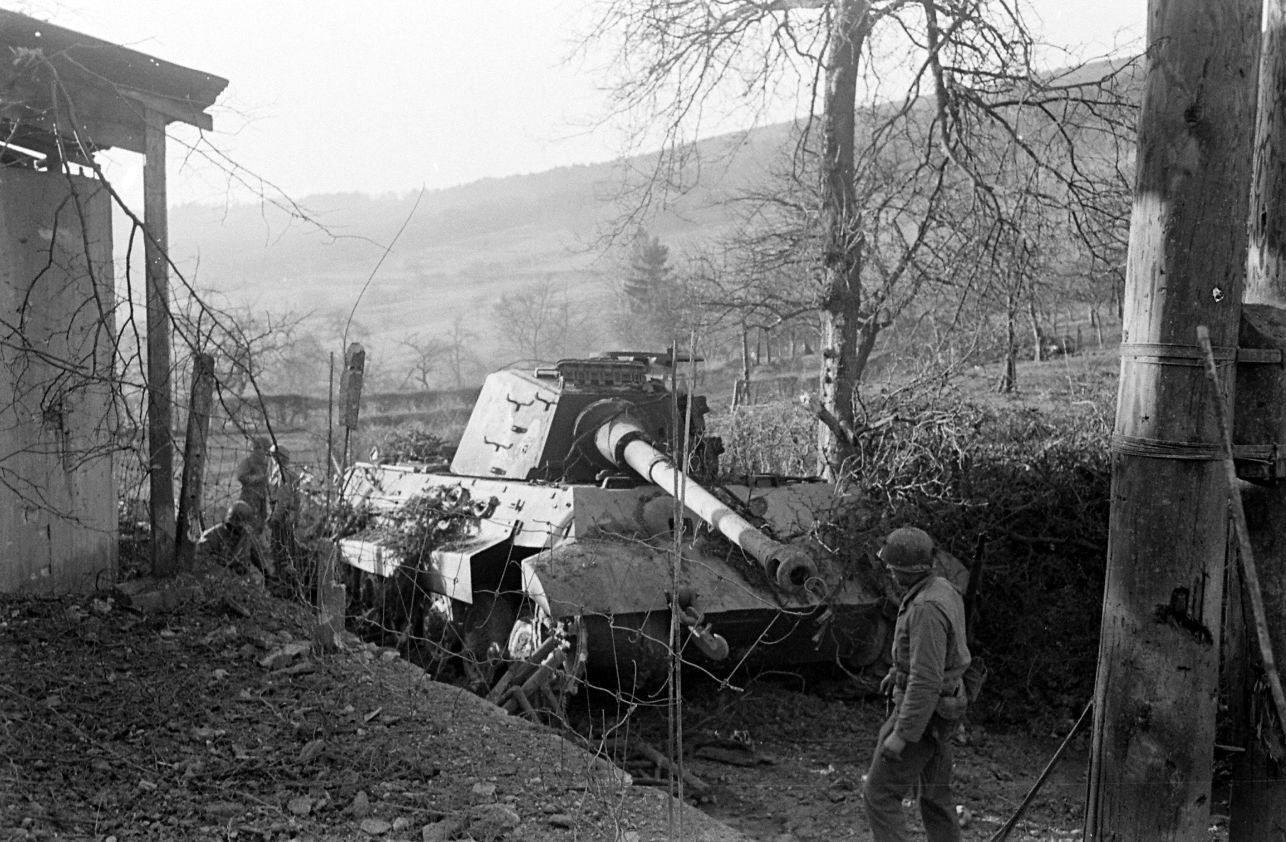
We drove from Stavelot towards Trois-Ponts at great speed. In that town, we were standing below the railroad bridge and received rather severe infantry fire from the bridge across the Salm River further down the road. Of a group of 7 to 12 PWs one who was brought over to Peiper’s vehicle, we learned that these soldiers were part of an Engineer Battalion and that they were ordered to stop our advance by demolition. Shortly after leaving Trois-Ponts, von Westerhagen arrived (CO 2.Panzer-Battalion). I asked him about the situation in his battalion and about the casualties. Von Westerhagen referred to American PWs shooting at Ligneuville, but no tactical information was reported in Peiper’s testimony about Tigers’ action.
(Question) Were there any attack of the 501 Heavy Group through Trois-Ponts later?
(Answer) Yes! As to artillery, about two batteries of the battalion assigned to the Kampfgruppe drove through Trois-Ponts. And there was a Flak Battalion there.
(Question) The blown-up bridge impediment?
(Answer) Yes, my road of advance from Trois-Ponts up west could not be maintained and I had to find another crossing somewhere. I decided to take the route by way of La Gleize to cross the Amblève River southwest of La Gleize in order to get back on to the main road in the southwest. This was December 18.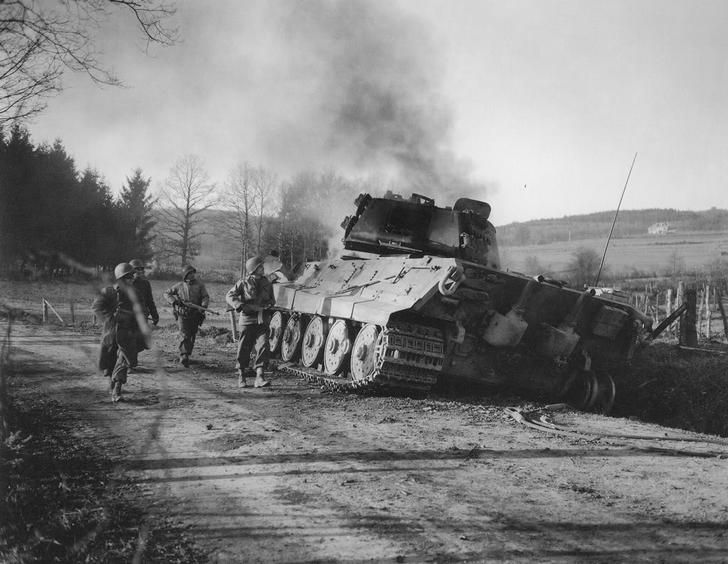
Peiper moved to La Gleize.
(Question) Were there any American forces there?
(Answer) No! La Gleize wasn’t taken. Belgian civilians were hiding in cellars.
Peiper and his group left La Gleize in the southwest direction and came to the bridge across the Amblève River (Froidcour). He saw some persons rushing around the bridge, and since he had to expect that this bridge too would be blown right in the front of his nose, the spearhead stopped and opened fire. No order was given; natural reaction. The tank that fired was about 400 meters from the bridge, Peiper himself about 450 meters. Visibility was satisfactory; no effort to attempt to identify the peoples. Peiper arrived on the bridge on a bicycle.
Then, on the other side of the bridge, my column was attacked by a heavy American air raid. Kampfgruppe Peiper spotted early that day by an Observation L-4, the IX Tactical Air Command had dispatched the 365th Fighter Group reinforced by a Squadron from each, the 366th Fighter Group and the 404th Fighter Group to attack the armored column everywhere and along the entire length of the column (about 30 kilometers). During the action around the Amblève bridge at Froidcour, one P-47 was shot down by the German Wirbelwinds and crashed in the outskirts of Francorchamps (Rivage).
